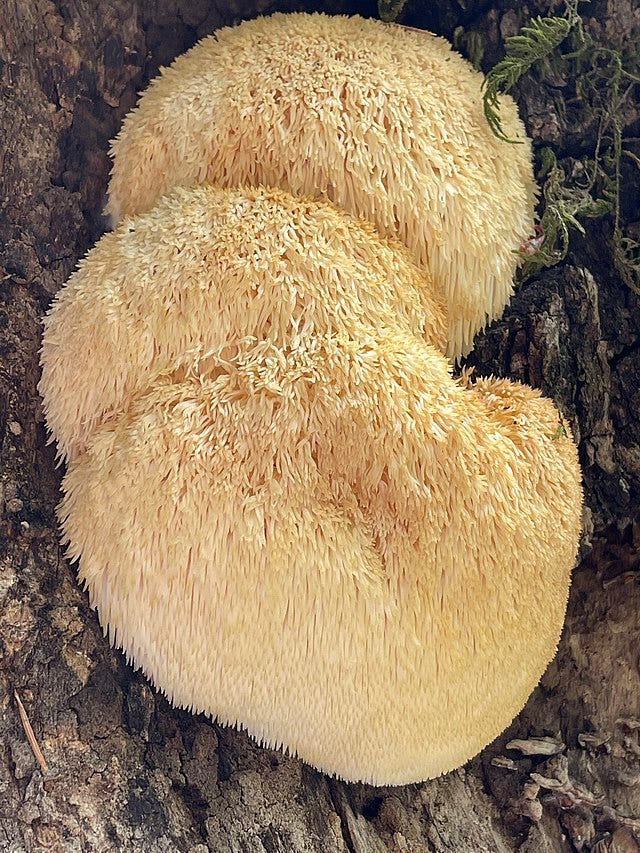The Best Form of Flattery? The Limitations of Imitation Meat
Plus my recipes for freezer-friendly lion's mane cutlets and mushroom jerky

I've been eating vegetable-based 'meats' since the early 2000s.
What started as a convenience food before I really knew how to cook (and when I was still vegetarian 100% of the time, rather than 90% or so like I am now) turned into a convenience food for the sake of convenience.
Over time, I found that some simple home cooked foods, ready in the fridge, offer an equally convenient stand-in that's more in line with my principles and interests, particularly in eating and learning about traditional/historic food (which, yes, we’ve imitated meats in many ways over the years in many places, but this current iteration is kind of its own beast). And so, the imitation meats have kind of gone by the wayside.
We all need to have convenient foods, but in my reading of Alicia Kennedy's work among others, I've learned a lot about the ways vegetable-based meat substitutes still tie into the systems many of us want to separate from.
I love a veggie nug on occasion still, but the truth is that they're still deeply interwoven into the monoculture-focused, shitty labor practices-heavy big ag that keeps us from dietary diversity, ecological diversity, and autonomy over our food supplies.
They also separate us from the magic of the ingredients they contain: Vegetables made to mimic meat, rather than being celebrated for themselves. They make a vegetable-focused diet seem like it's lacking something that has to be replaced, rather than something to simply be enjoyed as-is.
To paraphrase Mollie Katzen, why can't vegetarian cooking be about the vegetables?
And, if we're going to make fake meats from vegetables, why not harness what makes those vegetables unique?
I was exclusively a vegetarian for many years, and still most of what I eat is veg: I didn't find that I missed meat a ton, but that may be because I built in lots of savory umami flavors to my meals: So the satiation we associate with them was still part of my daily diet.
When it came time to start writing the Essential Preserving handbook, I was tasked with writing about meat as well as vegetable preservation. I started to think about how we could make and preserve our own vegetable-based "meats" that do more to honor their ingredients than just turning them into form-pressed paste (again, I eat homemade veggie burgers and other ground up things, so this isn't a criticism of veggie burgers: But it's also not the only option).
I've been leaning into mushrooms for this: emerging from the kitchen with mushroom-based "scallops" (the recipe for which will be in a future issue) and lion's mane cutlets that work in lieu of chicken cutlets.
And, I've made mushroom jerky that I actually reach for and enjoy (as opposed to meat jerkies, which I tend to find underwhelming). The scallops and cutlets are easy to make, both freezer-friendly, and easy to thaw and reheat.
I've also been playing with other ways to bring more umami-rich flavors into my diet (you guessed it, fermentation plays a role here): Particularly as I get many more requests from fellow cooks to cook more vegetable-focused fare.
Read on for the recipes, plus some additional ideas for folding umami into your dishes (and if you want to make two of my favorites, tempeh and miso, my recipes are in Joy Yonan's next book, Mastering the Art of Plant-Based Cooking).
And if you want to read more about the magic of mushrooms, make sure to check out last month's reading list, The Forests Beneath our Feet.
Keep reading with a 7-day free trial
Subscribe to Root: Historic Food for the Modern World to keep reading this post and get 7 days of free access to the full post archives.




